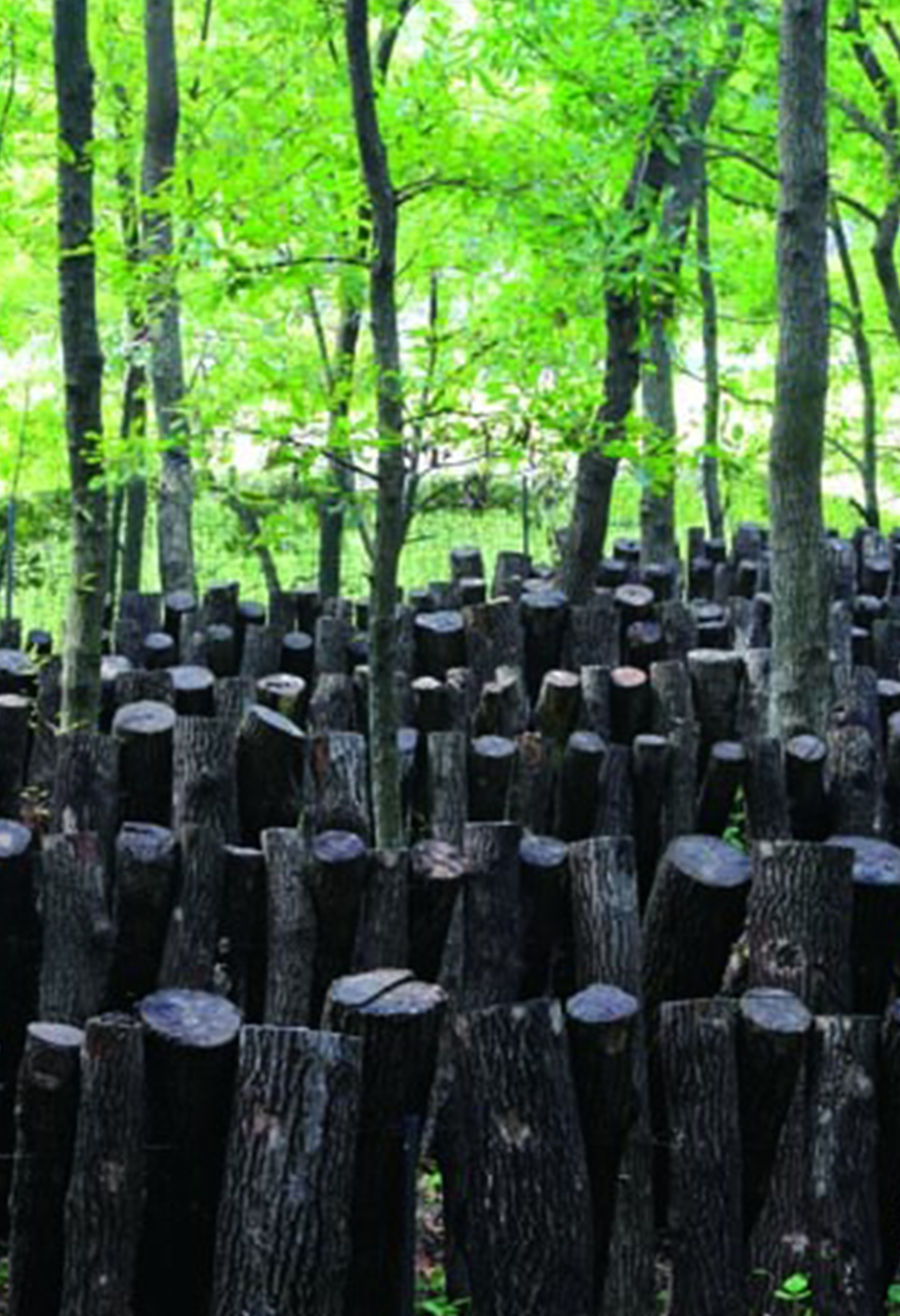Green infrastructure for mitigating urban heat island effects and associated health hazards from heat stress

ABOUT THIS ISSUE
Increased urban heating during extreme summers and incidences of health hazards
SOLUTION
Green infrastructure for cooling effects and minimiszation of energy consumption
Urban heat island effect
Climate change and urban development have resulted in several challenges such as heat island effect, air, noise, water pollution, water scarcity, flooding, and the loss of biodiversity. Extreme heat events are getting more frequent and more intense. According to Cool Cities Network, the number of cities exposed to extreme temperatures will nearly triple over the next few decades and more than 970 cities will experience average summertime temperature highs of 35˚C by 2050. Cities are specifically vulnerable to rising temperatures due to the urban heat island (UHI) effect. As a result, cities are 5 to 9 degrees Celsius warmer than rural areas. Besides emitting heat such as from buildings, industries or vehicles, urban surfaces absorb more sunlight and heat than natural landscapes. Urban settings often have trade-offs in regions with significant cooling demand in terms of high energy demands, increased air pollution and GHG emissions, leading to further release of heat. Heat stress severely affects health and comfort, and increases mortality problems. Globally, instances of heat-related deaths are rising. The most vulnerable populations, such as the elderly, are at high risk especially in the summer season. The scale of UHI effects is further intensified by global warming triggered by human activities.
Europe, Australia, North America, Japan, China, and several other Asian countries are increasingly concerned about mitigating the impacts of UHI. Under C40 Cities, which is a global network of mayors taking urgent action to confront the climate crisis, 21 cities have already prioritised heat as a major concern. They are working collectively to address urban heat island effect and extreme heat events in their cities through the Cool Cities Network.
Green Infrastructure
Open surfaces such as roofs and pavements cover about 60% of urban areas ( roofs typically cover 20–25% and pavements cover about 40%). Cities can reduce urban temperatures by adopting various measures to cool these surfaces such as the use of cooling materials, urban design and green infrastructure. Many cities are employing green infrastructure and are investing in creating healthy and greener landscapes and various kinds of natural capital. Green infrastructure is an important nature-based solution to address climate change problems and aid adaptation to heat stress. Green roofs and green landscapes are two types of green infrastructure that could be employed in cities to mitigate UHI. Green roofs encompass a wide range of features and terms including roof greenery, ecological roofs, roof gardens, living roofs, vegetation roofs or roof agriculture. On the ground, parks, green landscapes, and urban forest could maintain a vegetation canopy which provides shading and cools the nearby air through evapotranspiration (Liu et al, 2021). Cooling effects could be enhanced through a combination of green infrastructure with cool roofs and pavements, using materials or coatings that reflect more sunlight or provide cooling effect through evaporation of water.
Surveys in US cities have found that cool roofs, pavements and shade trees can reduce ambient air temperature by 2 to 4 degrees Celsius during summer (C40, 2016). There are numerous benefits of green infrastructure in addition to mitigating UHI. Green infrastructure, in the form of artificial ecosystems, can perform a range of ecosystem services including alleviating the urban heat island effect, carbon sequestration and GHG mitigation, regulating indoor temperature, and reducing building energy consumption, intercepting and absorbing rainfall, reducing roof runoff, improving the urban water environment, reducing urban waterlogging, improving urban air quality by absorbing dust and other air-borne pollutants, reducing noise pollution, greening the urban landscape and improving urban biodiversity, enhancing aesthetic value, and providing space for urban farming.
Broader awareness about the feasibility and benefits of green infrastructure
Successful adoption of green infrastructure depends on a number of factors such as local circumstances and characteristics, space requirements, water availability for irrigation, weight and availability of materials (substrate, plant species), cost benefits, durability and maintenance requirement etc. City planners, private sector companies and individuals need guidelines and proper support on decision-making to understand and quantify the associated economic, ecosystem, health and wellbeing benefits of green infrastructure. Numerous decision-making support tools are already available such as Stadtklimalotse (Urban climate pilot), California Heat Assessment Tool (CHAT), Right place—right tree, Nature-based Solution Selection Tool, Microclimate and Urban Heat Island Mitigation Decision- Support Tool, Climate Resilient city Toolbox (Qureshi et al., 2021). Decision-making support could be further enhanced by review of best practises and approaches and combining inputs from various sources such as gathering feedback from experts and residents, private sectors. Some of the best practices identified by Cool Cities Network include: make the cool surface business case to property owners, incorporating cool options in larger and long-term infrastructure planning; undertake public outreach and awareness raising; identify co-benefits; offer financial and non-financial incentives; and develop legislation and guidelines (C40, 2016).
References
- C40. 2016. Good Practice Guide, Cool Cities
- Liu, H., Kong, F., Yin, H., Middel, A., Zheng, X., Huang, J., Xu, H., Wang, D. and Wen, Z., 2021. Impacts of green roofs on water, temperature, and air quality: A bibliometric review. Building and Environment, 196, p.10779.
- Qureshi, A.M.; Rachid, A. 2021. Review and Comparative Study of Decision Support Tools for the Mitigation of Urban Heat Stress. Climate, 9:102.
- Williams, N.S., Bathgate, R.S., Farrell, C., Lee, K.E., Szota, C., Bush, J., Johnson, K.A., Miller, R.E., Pianella, A., Sargent, L.D. and Schiller, J., 2021. Ten years of greening a wide brown land: A synthesis of Australian green roof research and roadmap forward. Urban Forestry & Urban Greening, 62, p.127179.





